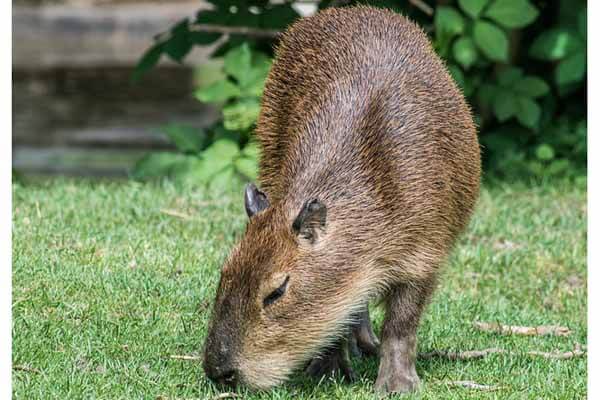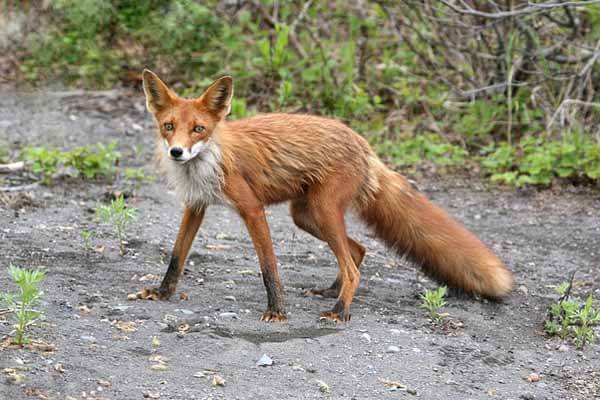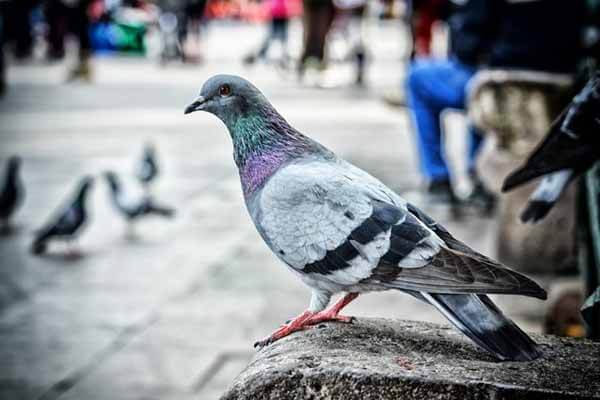Today we will consider two types of rodents with no tail.
These are guinea pig and capybara.
Rodent with no tail: Guinea Pig

Guinea pigs have been widely popular as pets since their appearance in Europe in the 16th century. Their kind nature, original color, relative ease of maintenance, and easy breeding, still support the mass distribution of these rodents as pets.
So why are guinea pigs so called? Information about guinea pigs is found in the records of Spaniards landing on the shores of South America. When they saw these animals for the first time, they were reminded of the dairy piglets. This is one version of why guinea pigs are pigs. Also, the guinea pigs were bred for food, as well as in Europe common pigs.
There are several other assumptions why guinea pig is a guinea pig. First, when the beast is anxious or satisfied, it makes sounds similar to squealing or grunting. Secondly, the lower limbs of the guinea pigs are shaped like hooves. Definitely, these rodents were named by the Spaniards who brought them to Europe, and then this name spread to all countries.
These popular pets belong to the rodents and their content in something similar to that of the house of decorative rabbits. Organizations and private breeders involved in the maintenance and breeding of guinea pigs exist all over the world. They bred many different breeds of these animals, with different colors, patterns, and long wool.
Rodent with no tail: Capybara

The capybara is the largest among modern rodents. In the language of the Guaraní Indians, the word capybara means “gentleman of herbs”. The body length of an adult reaches 1-1.35 m, the height in the crest – 50-60 cm. Males weigh 34-63 kg, and females – up to 65.5 kg. Externally, these animals resemble a giant big-beam guinea pig. These rodents are usually active during the day, but if they are often disturbed by humans and predators, they switch to the nightlife.
Capybaras move perfectly in ponds and dive, which is facilitated by the presence of swimming membranes on their feet, and the high position on the head of eyes, ears, and nostrils allows them to hide the body while swimming underwater, without losing orientation in space.
Capybaras live in groups of 10-20 individuals, consisting of a dominant male, several adult females, cubs, and subordinate males. Some individuals live alone. These animals communicate through whistling, clicking, and barking sounds, as well as the smell of the secret of the olfactory gland, which is located in the males’ muzzle. Their food consists of fruits and tubers, hay and grass, water plants. Capybara reach puberty at 12-18 months, can reproduce all year round. Mating takes place in water. Pregnancy lasts about 150 days.
Childbirth takes place on the ground, not in shelters. Female brings from 2 to 8 calves, which are born with wool, open eyes, and teeth teething. Newborn babies weigh about 1.5 kg. All the females in the group take care of the newborns, who soon after birth can follow their mother and eat grass. Dairy feeding lasts up to 3-4 months.
The habitat of a capybara is the shores of various reservoirs in tropical and temperate parts of South America. In the mountains, capybaras are found up to a height of 1300 m above sea level.
Rodents With No Tail
Although most rodents have a long tail, there are some species with no tails. These rodents are sometimes kept as pets, and some breeders are now breeding them for pet markets. Most tailless rodents belong to the taxonomic family Caviidae. These animals are not dangerous, but their lack of a tail can be alarming. Read on to learn more about these adorable creatures and the many things they do.
The first rodent with no tail is the vole, a small, compact mammal with a tailless body. These mammals are gray or brown and exhibit a wide variety of colors. Tailed rats are born without a tail and have a modified sacrum, lumbar vertebrae, and femur. Despite their lack of a tail, tailless rats are still able to walk on two legs, unlike a cat.
Another type of rodent with no tail is the capybara, which is native to South America. These mammals are about two feet long and have two sets of incisors in each jaw. Tailed rats are usually brown or gray in color, with variations of brown. The largest rodent with no tail is the capybara, which is found in tropical South America. They are about four feet long and weigh up to 100 pounds, and are sometimes referred to as water pigs.
The vole is a small and stocky rodent with a long tail. It is a member of the Caviidae family and is endemic to most landmasses except Antarctica. They have been introduced to many ocean islands and have since become widespread throughout the world. They are one of the few mammals to be entirely tailed, and they are the only placental mammals to live on Antarctica before the arrival of Homo sapiens.
The biggest rodent in the world is the capybara. It is about two feet tall at the shoulder. Its body is similar to that of a horse, but it is also the largest rodent in the world. The smallest of these rodents is the guinea pig. The capybara’s limbs are webbed, which means that it is a very small animal.
The capybara is the largest rodent in the world, with a body length of 2 feet. They have beaver-like faces and short, stubby tails. They are not native to the continent, but they were introduced to several ocean islands. And they’re not the only rodents with no tail! When it comes to size, the smallest is the tailed capybara.
The most common type of rodents with no tails are the capybara and the kangaroo rat. These two rodents are native to South America, and they are both large. They are about 100 pounds and are about a foot and a half long. They have no tails and a tailless body. Nevertheless, they are very cute and are worth mentioning. They’re not only adorable critters, but they’re very intelligent as well.
The largest rodent in the world is the capybara. Standing two feet tall at the shoulder, it is built like a barrel with legs. It has long, shaggy hair and a beaver-like face. The no-tail species has no tails but has two short, webbed feet. They are closely related to guinea pigs and cavies. These animals are small, and the stubs of their backs are the only ones with no tails.
The vole is a small, stocky rodent with a long tail. These creatures are grey or brown, with some species having brown or blue coats. Their bodies are compact and stubby. They also have long legs. The smallest members of the rodent family have no tails, while the smallest have no tails. The most common tailless rats have no tails. They are congenitally tailless. In other words, they are born with no or modified lumbar vertebrae.
Among the many species of rodents with no tails, the jerboa is the most common. Its size is about eight inches long and is covered with a dense, silky brownish-yellow fur. Its hind legs are extremely long, and it has a very short tail. Its stubby tail allows it to leap over large obstacles. Its main diet is comprised of a diet rich in fiber and low in starch.








